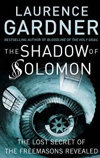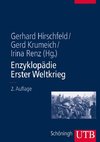
Church buildings established in the 9th century
Source: Wikipedia. Pages: 30. Chapters: Cathedral of Santiago de Compostela, Le Mans Cathedral, Santa María del Naranco, Nea Ekklesia, Aachen Cathedral, Church of Saint Lazarus, Larnaca, Cámara Santa, Church of Saint Apostles Peter and Paul, Saint Justinus'... Viac o knihe
Produkt je dočasne nedostupný
14.08 €
bežná cena: 16.00 €
O knihe
Source: Wikipedia. Pages: 30. Chapters: Cathedral of Santiago de Compostela, Le Mans Cathedral, Santa María del Naranco, Nea Ekklesia, Aachen Cathedral, Church of Saint Lazarus, Larnaca, Cámara Santa, Church of Saint Apostles Peter and Paul, Saint Justinus' church, Frankfurt-Höchst, San Julián de los Prados, St. Rupert's Church, Vienna, Palatine Chapel in Aachen, San Giorgio in Velabro, Santa Cristina de Lena, Church of San Tirso, Oviedo, St Mary's Priory Church, Deerhurst, San Miguel de Lillo, Santa Francesca Romana, Church of Santa María de Bendones, San Lorenzo in Panisperna, St Mary's Church, Battersea, St Nicholas' Church, Leicester, Church of San Salvador de Valdediós, Santo Stefano degli Abissini, Church of Santo Adriano de Tuñón, Church of San Pedro de Nora, Santo Stefano degli Ungheresi, San Canciano, Church of Santiago de Gobiendes, San Giacomo dall'Orio, Cattolica di Stilo, St. Michael's Church, Fulda, San Moisè, San Lorenzo, Venice, Santa Maria Maggiore, Gazzo Veronese. Excerpt: Santiago de Compostela Cathedral (Galician: ) is a Roman Catholic cathedral of the archdiocese of Santiago de Compostela in Galicia, Spain. The cathedral is the reputed burial-place of Saint James the Greater, one of the apostles of Jesus Christ. It is the destination of the Way of St. James, a major historical pilgrimage route since the Middle Ages. According to legend, the apostle Saint James the Greater brought Christianity to the Celts in the Iberian Peninsula. In 44 AD he was beheaded in Jerusalem. His remains were later brought back to Galicia, Spain. Following Roman persecutions of Spanish Christians, his tomb was abandoned in the 3rd century. Still according to legend, this tomb was rediscovered in 814 AD by the hermit Pelayo, after witnessing strange lights in the night sky. Bishop Theodomirus of Iria recognized this as a miracle and informed king Alfonso II of Asturias and Galicia (791-842). The king ordered the construction of a chapel on the site. Legend has it that the king became the first pilgrim to this shrine. This was followed by a first church in 829 AD and again in 899 AD by a pre-Romanesque church, at the order of king Alfonso III of León, causing the gradual development of a major place of pilgrimage. In 997 this early church was reduced to ashes by Al-Mansur Ibn Abi Aamir (938-1002), army commander of the caliph of Córdoba, Spain. The gates and the bells, carried by Christian captives to Córdoba, were added to the Aljama Mosque. When Córdoba was taken by king Ferdinand III of Castile in 1236, these same gates and bells were then transported by Muslim captives to Toledo, to be inserted in the Cathedral of Saint Mary of Toledo. Construction of the present cathedral began in 1075 under the reign of Alfonso VI of Castile (1040-1109) and the patronage of bishop Diego Peláez. It was built according to the same plan as the monastic brick church of Saint Sernin in Toulouse, probably the greatest Romanesque edifice in France. It was built mostly in gra
- Vydavateľstvo: Books LLC, Reference Series
- Formát: Paperback
- Jazyk:
- ISBN: 9781156090480


 Anglický jazyk
Anglický jazyk 



 Ruský jazyk
Ruský jazyk 





